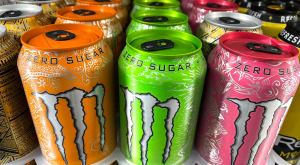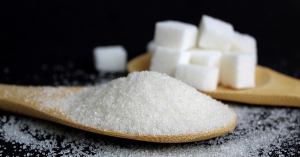With Subway’s recent backlash for using a “yoga mat material” in its bread and the “pink slime” meat outrage a few years ago, it seems that people aren’t worried about what their food contains until they see it for themselves or have something outright disgusting to associate with it. If you’d like to avoid another shocking food discovery, read these ten potentially harmful ingredients and know how to avoid them!
1. Monosodium glutamate (MSG):
Videos by PopCulture.com
This is a flavor enhancer common in Chinese dishes and nearly every processed or packaged food imaginable. It has been deemed safe by the Food and Drug Administration (FDA), but companies are required to list it on their packages if the additive is present. Many scientists and experts disagree with the FDA’s classification, though, noting reactions like headaches, nausea, heart palpitations and more after consuming MSG foods, as well as appetite stimulation causing overeating!
2. Sodium nitrate and sodium nitrite:
Normally added to cured meats to preserve and color them and prevent bacteria, this ingredient is also used to kill rodents and pests. They may be linked to an increased risk of heart disease, diabetes or various cancers.
3. Butylated Hydroxyanisole (BHA):
Used in fatty and oily foods like potato chips, butter, and dry drink and dessert mixes, this antioxidant helps to preserve these foods from rotting and smelling foul. It’s known to cause cancer in rodents, but the effect it has on humans is unclear. Live Science suggests that vitamin E can take the place of this potentially harmful ingredient, which is known to be safe in small doses.
4. High fructose corn syrup:
This ingredient is basically a cheap alternative to cane sugar and can be found in sodas, cereals, sauces, condiments and more. It’s the number one source of calories consumed by people in the US and is directly linked to weight gain and Type 2 diabetes.
5. Enriched, bleached white flour:
White flour alone isn’t healthy, as the grains are stripped, removing all the nutrients and more or less transforming it into a form of sugar. But bleaching the flour to make it appear cleaner allows alloxan to form as part of the chemical treatment, a poison that causes diabetes.
6. Potassium bromate:
Found in mass-produced breads and buns, as well as frozen pizza dough, this ingredient holds bread together faster without the need for a setting time in open air. It’s been found to cause cancer in rodents and the process has been banned in China, Canada, the European Union and more.
7. Artificial sweeteners:
You may think opting for Sweet’n Low® or Splenda® rather than sugar is smart, but these sweeteners like sucralose, saccharin or aspartame are high-processed chemical-laden products. They’re meant to reduce calories in food or drinks, but they are excitotoxins that cause headaches, blurry vision and gastrointestinal damage. It has also been found to destroy your immune system over time!
8. Color additives:
Dyes in food are meant to offset color loss during storage, to enhance colors to help with visual association (think: mint chocolate chip ice cream is made to look green). The harmful speculations of consuming these additives aren’t confirmed, but they are unnecessary added ingredients that should be avoided when possible.
9. Hydrogenated oils:
This ingredient is formed when hydrogen is added to vegetable oil, making it more solid. It’s used to impact the texture and prolong the shelf life of processed foods. When hydrogen is added, this becomes a type of man-made trans fat which has been deemed unhealthy by the FDA. In June 2015, the FDA took action to reduce its use, but it’s still important to check the ingredients list for partially hydrogenated oils as they contain trans fat, even if the panel says it contains zero grams.
10. Artificial flavors:
The harm in this ingredient is that each food that contains it isn’t specific as to what those flavors are or how many are present. A processed food with artificial flavoring could contain one unnatural flavor or it could be a mass combination of artificial, potentially harmful substances. Just remember: fresh, natural food doesn’t need fake flavoring.
Related Posts
-

SAN FRANCISCO, CALIFORNIA – NOVEMBER 04: Cans of Monster Energy Drink are displayed on a grocery store shelf on November 04, 2021 in San Francisco, California. Monster Beverage will report third quarter earnings today after the bell. Analysts anticipate the beverage company to report earnings of $1.39 billion.




